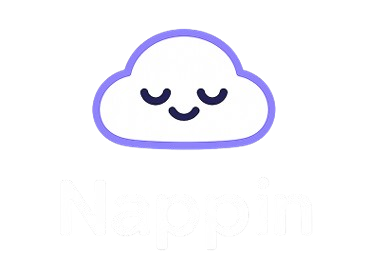Napping to Reduce Stress & Boost Mental Clarity
(The Ultimate Guide to Mental Reset & Relaxation)
Quick Calm: Discover how a simple 20-minute nap can dissolve stress and refresh your mind , fast.
By Nappin Team
Last Updated: July 29, 2025
In a world constantly demanding your attention (slack pings, deadlines, traffic, and texts) mental exhaustion creeps in fast. Add stress from school, work, or personal life, and your brain is running on fumes by 2 PM.
What if you could clear the mental fog without meditating for hours or escaping to the woods? Enter the power nap, a 20-minute mental reset proven to reduce cortisol, restore clarity, and help you face the rest of the day calm and focused.
The Science: How Naps Help Manage Stress
Multiple studies support the stress-reducing power of naps:
- A 2021 study found that brief naps reduced cortisol levels, the stress hormone, and improved emotional regulation post-nap.
- Research from the University of Michigan showed people were less impulsive and more tolerant of frustration after a short nap (source).
- According to the Sleep Foundation, naps between 10 to 30 minutes can promote relaxation, improved mood, and reduced fatigue without interfering with nighttime sleep.
Why Stress Hijacks Your Brain
When you’re stressed, your body goes into fight-or-flight mode. Cortisol spikes. Heart rate increases. Blood flow diverts from the thinking brain (prefrontal cortex) to survival systems. That’s why you feel foggy, tense, or scatterbrained.
Short naps, even just 15 to 20 minutes, lower physiological arousal and give your brain space to reset.
According to Stanford Medicine, even “micro naps” can reverse the effects of stress on the brain, particularly in areas responsible for focus, emotional control, and decision-making.
How Naps Restore Mental Clarity
So what’s happening inside your brain during a nap?
In the first 20 minutes of sleep:
- Your hippocampus (memory center) consolidates information.
- The prefrontal cortex (decision-making, self-control) gets a break.
- Brain waves shift from beta (busy) to alpha and theta, associated with calm, creativity, and insight.
The result? When you wake up:
- You think more clearly
- Feel more emotionally grounded
- And often solve problems more easily
Think of a nap like clearing browser tabs in your brain, suddenly, you have RAM again.
How to Nap for Stress Relief (Step-by-Step)
You don’t need a fancy meditation retreat. Just follow these steps:
Your 20-Minute Anti-Stress Nap Routine:
- Set a timer for 25 minutes max (20 to nap, 5 to fall asleep).
- Find a quiet, dark spot, or use an eye mask and white noise.
- Do 60 seconds of deep breathing before closing your eyes.
- Let your thoughts float, don’t “try” to nap. Just rest.
- Use the Nappin app to gently wake you with vibration or sound, so you return to calm instead of panic.
Nappin’s heart-rate based sleep detection ensures your nap timer only begins once you actually doze off, maximizing mental recovery in minimal time.
Summary: The Shortcut to Calm and Clarity
Let’s recap:
- Short naps reduce cortisol, calm the nervous system, and help manage frustration
- Just 20 minutes can restore focus, emotional regulation, and memory function
- Brainwave activity during naps mimics deep mindfulness
- Napping is one of the most underrated stress-relief tools you can start today
Try a 20-minute clarity nap with Nappin and feel the shift.
Sources
- National Institutes of Health (NIH): Effects of Napping on Cognitive Function and Mood NIH Study on Naps & Mood
- University of Michigan: Short Naps and Emotional Regulation UMich: Short Naps and Frustration Tolerance
- Frontiers in Psychology (2021):The Stress-Reducing Effects of Napping Study: Daytime Naps Reduce Cortisol
- Sleep Foundation: Napping Benefits for Mental Health SleepFoundation.org: Mental Benefits of Napping
- Stanford Medicine: Brain Reset from Naps Stanford Neurology Article on Naps
Copyright © 2025 Nappin, Inc. All rights reserved. Designed by Aarwin Adhikari




